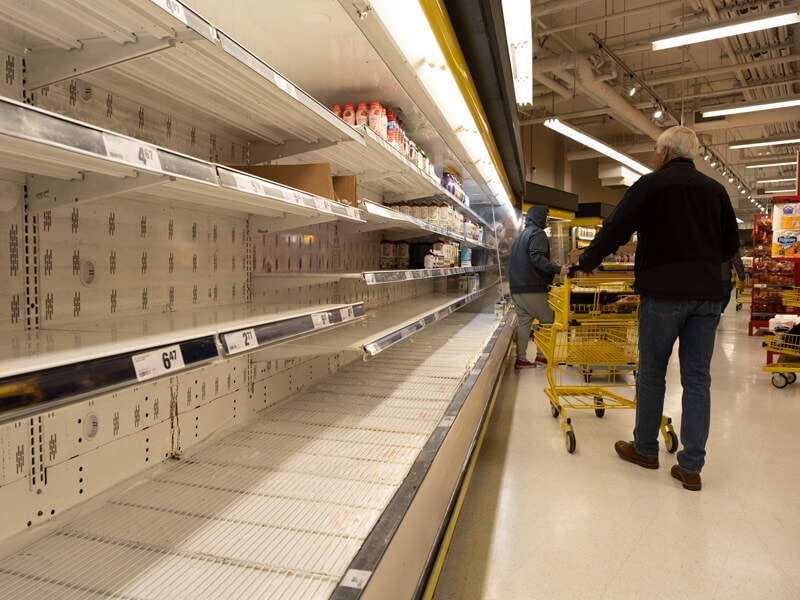Home > TradeEdge > Blogs > From demand planning to on-ground ops: Five ways in which sell-through data will transform your retail business
From demand planning to on-ground ops: Five ways in which sell-through data will transform your retail business

Having a clear view of your end-customer preferences can help you in more ways than one. Today, we discuss five fundamental ways in which sell-through data can impact your supply chain and sales.
One of the biggest concerns about making business decisions using ‘sell-in’ data — i.e. data about products sold to the distributor / retailer, instead of ‘sell-through’ data — i.e. data about products purchased by the end-customer — is that you’re forecasting your demand based on your distributor’s / retailer’s forecast of their demand. This means your decision-making relies not on what your end-customer is buying, but on what your distributor / retailer guesses that your end-customer might buy. In fact, in 2018, 56% of surveyed companies told the Sourcing Journal that they keep “more than three weeks’ worth of safety stock due to lack of visibility.”
In a world without access to end-customer data, this might have been the next-best thing. But not anymore. Retailers globally are moving towards using sell-through data for making business decisions. With good reason. Here are five.
Insight-driven demand planning
In my opinion, sell-through data’s biggest transformation will be on demand planning. With near real-time visibility into what the end-customer is actually buying—when, where and how—can have significant impact on what you’re manufacturing, shipping and distributing.
More importantly, demand planning based on sell-through data empowers you to react immediately and appropriately to market fluctuations. It would help send the right inventory to the right place at the right time, ensuring the supply chain stays optimized. This not just helps retailers, but also all channel partners, who benefit from the improved inventory turn.
For instance, we helped a global sports apparel retailer gain 60% increase in partner-network and brand visibility through TradeEdge Market Connect, which resulted in a 30% increase in inventory turn. The impact, is, in fact, that tangible! You can read the entire case study here.
Profitable trade promotion planning
“33% of trade promotions is reactive,” finds Nielsen. Offering deep discounts to make up for lack of demand affects the profitability of everyone across the supply chain. Manufacturing and distribution initiatives can now be calibrated with actual end-customer demand—with sell-through data—making trade promotions more effective.
This also builds better customer loyalty. This way, end-customers will begin to see trade promotions positively, instead of looking at them with suspicion as a way to ‘clear stock’.
Effective marketing
In the absence of sell-through data, retailers will be left to rely on third-party data—like television rating points (TRPs) and gross rating points (GRPs)—which are both expensive and ineffective in correlating advertising spend to actual sales. More importantly, this doesn’t give retailers omni-channel visibility either.
Sell-through data helps break the channel silos and look at marketing effectiveness as a whole.
Improved channel sales
The most contested space in the retail supply chain is the shelf-space at a multi-brand outlet. Always at a premium, retail shelf space has direct impact on sales at that store. While brands are willing to pay good price for the space, retail outlets understand the value of that space and the need to place high-demand products there. This is also why most retail outlets place their white-labelled products at the best spot.
With actionable sell-through data, you can have a meaningful and data-driven conversation with your retail partners—and make a case to get the space. This way, you’ll be taken seriously, have better negotiating power, and perhaps even a better position to strike mutually beneficial deals.
Optimized operations
I said earlier that third-party data, like TRPs and GRPs, can be ineffective in marketing analysis. But that’s just a small part of the story. Such data is often expensive and inefficient in solving specific business problems. Most retailers use this data because that’s the only one available, in spite of it not being entirely useful.
The return on investment in capturing and analyzing sell-through data, on the other hand, can be immense. Once you have a process and system for capturing and leveraging sell-through data, your operations will take care of its execution. This also makes achieving scale simpler. With a replicable model, onboarding each partner and expanding across new markets will be easy.
Our customer—a global multi-national in sports apparel—clearly saw the benefits of capturing and leveraging ‘sell-through’ data for their demand planning. As part of their long-term strategic initiative, they brought TradeEdge Market Connect to collect data from 325+ retailers, covering 32,000+ stores across 30+ countries, harmonize that data and deliver actionable insights.
This endeavor took not just the adoption of technology, but a radical rethinking of processes across their supply chain. The results, it goes without saying, were well worth it. Read the entire story here.


Possibilities Unlimited
Possibilities Unlimited
Inspiring enterprises with the power of digital platforms
More blogs from TradeEdge →